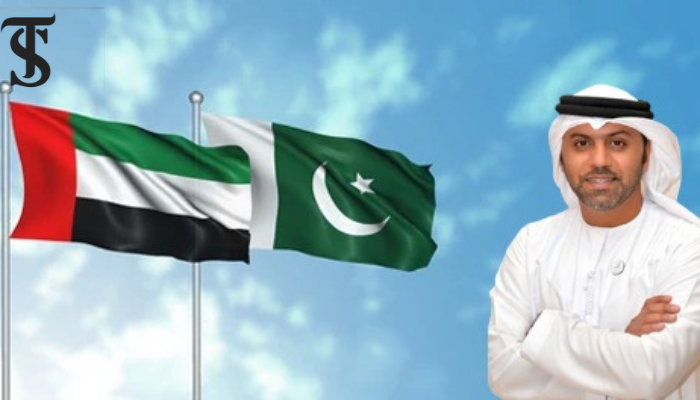“Modi and the RSS”

- Narendra Modi and the RSS: Modi, a lifelong member of the RSS, has been instrumental in turning the Hindu supremacist organization into a dominant force in India. The RSS, influenced by fascist ideologies, promotes Hindu nationalism and targets Muslims as outsiders, contributing to communal violence.
- Rise to Power Through Gujarat Riots: Modi's political career took off after the 2002 Gujarat riots, where anti-Muslim violence followed the burning of Hindu pilgrims. He won elections in Gujarat, not despite the violence but because of it, earning the title "Emperor of the Hindu Heart."
- Control and Consolidation of Power: In Modi's subsequent terms, the RSS consolidated control over Indian institutions, including the media, police, and intelligence agencies, while Modi continued his anti-Muslim rhetoric to secure power for three consecutive terms.
Narendra Modi, an Indian politician serving as the current Prime Minister of India and the leader of the Bharatiya Janata Party, has made three consecutive governments in India. He triumphed over India for the first time in 2014 and sure-fired his second term in 2019. Here and now, the creation of the RSS, the Rashtriya Swayamsevak Sangh, has taken over India again. He’s the second PM of India, after Jawaharlal Nehru, who has made three sequential governments in India. But the question arises: Who is Narendra Modi? How did he gain popularity in India? What was the main source behind him? What was the formula for taking over back-to-back power? What is the connection of Modi with the Bharatiya Janata Party (BJP), and why is the BJP the wealthiest party in India?
India is not a country. It’s a continent. More complex and diverse, with more than 780 languages, excluding dialects—more nationalists and sub-nationalities, and more indigenous tribes and religions than all of Europe. Imagine this vast ocean, this fragile, fractious social ecosystem, suddenly being commandeered by a Hindu supremacist organization—the RSS—that believes in a doctrine of one nation, one language, one religion, and one constitution.
The RSS, Rashtriya Swayamsevak Sangh, was founded in 1925—the mothership of the ruling Bharatiya Janata Party. Its founding fathers were greatly influenced by German and Italian fascism. They likened the Muslims of India to the Jews of Germany and believed that Muslims had no place in India. The RSS today, in typical RSS chameleon speak, distances itself from this view. But its underlying ideology, in which Muslims are cast as permanent, treacherous ‘outsiders’, is a constant refrain in the public speeches of BJP politicians and finds utterance in the chilling slogans raised by rampaging mobs. For example: ‘Musalaman ka ek hishtan—Kabristan ya Pakistan’. In October 2019, Mohan Bhagwat, the supreme leader of the RSS, said, ‘India is a Hindu nation; it is non-negotiable.’. That idea turns everything beautiful about India into acid. RSS in India is responsible for shockingly violent attacks on minority communities. In India, over the years, uncounted thousands have been murdered. Violence, communal conflagration, and false flag attacks are their principal strategies and have been at the very core of the saffron campaign.
Prime Minister Narendra Modi has been a member of the RSS all his life. He is the creator of RSS. He is responsible for turning it into the most powerful organization in India and for writing its most glorious chapter yet. But how does Modi get into politics?
Modi’s political career was jump-started in October 2001, just weeks after the 9/11 attacks in the United States, when the BJP removed its elected Chief Minister in the state of Gujarat and installed Modi in his place. He was not, at the time, even an elected member of the state’s legislative assembly. Five months into his first term, there was a heinous, mysterious act of arson in which fifty-nine Hindu pilgrims were burned to death in a train coach. As retaliation, Hindu vigilante mobs estimated 2,500 people, almost all of them Muslims, were murdered in broad daylight. Women were gang-raped on city streets, and tens of thousands were driven from their homes. Immediately, after the pogrom, Modi called for elections. He won, not despite the massacre but because of it. He became known as the Emperor of the Hindu Heart and was re-elected as CM for three consecutive terms. What was bad for the country was good for the BJP.
In Modi’s second term, the RSS has stepped up its game like never before. It was no longer a shadow state or a parallel state. It was the state. Day by day, we have seen examples of its control over the media, the police, and the intelligence agencies. Worryingly, it also appeared to exercise considerable influence over the armed forces. Modi has always wanted India to be a Hindu state. He is an anti-Muslim leader and did not stop rhetoric against Muslims and called Muslims ‘Atangwadi’—’terrorists’. Lynching Muslims is a playgame and the stepping stone to secure his power. That was the recurrence scheme that he applied for taking over India for three consecutive terms.

Rehman Yar
The writer is a student of Public Policy at Government College University, Lahore.






Su kaçağı uzmanı Üsküdar Üsküdar’da su kaçağı tespiti için en iyi hizmeti aldık. Memnun kaldık. https://social.ghame.org/read-blog/40273